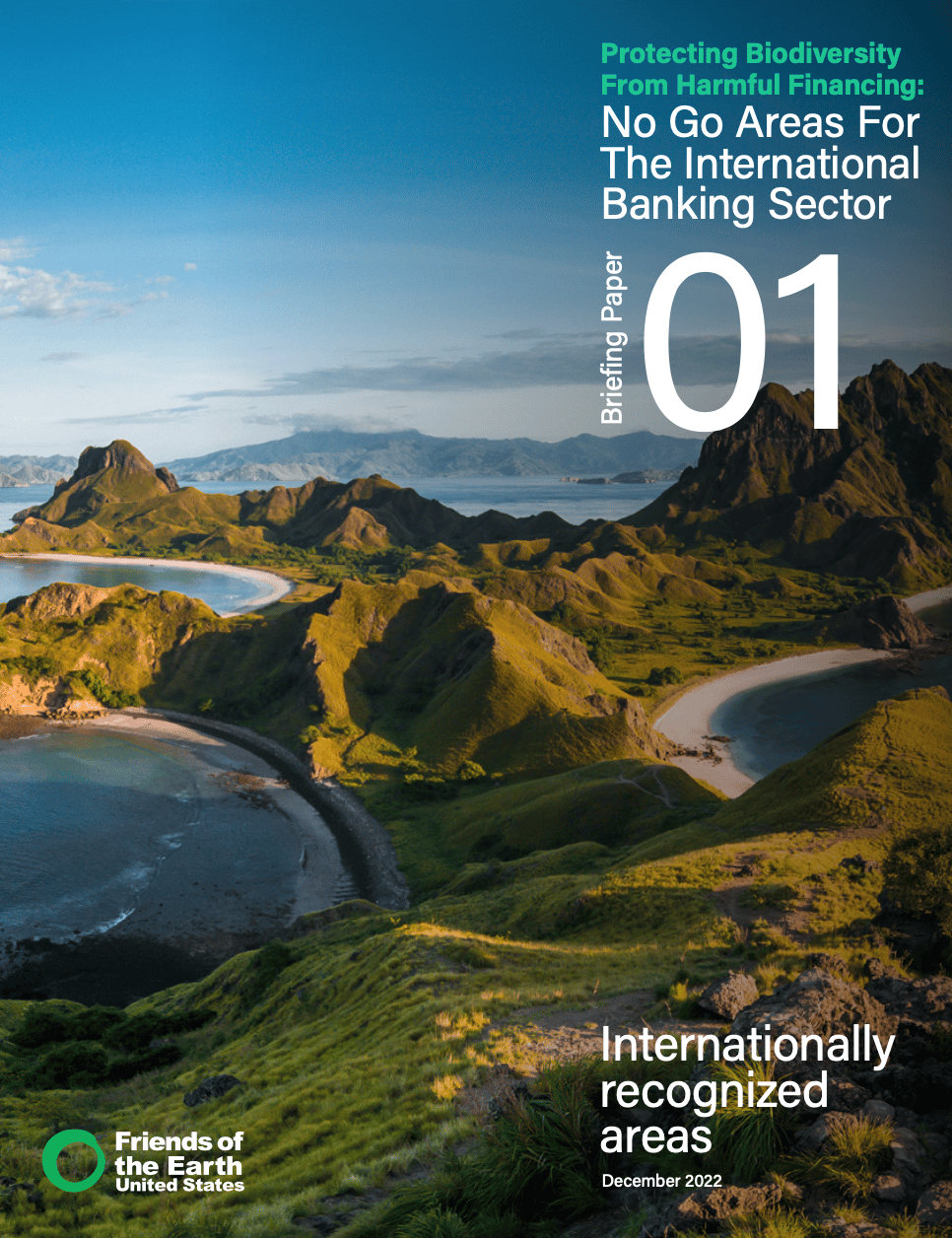Protecting Biodiversity from Harmful Financing: Internationally-Recognized Areas

Friends of the Earth US’ new briefing paper, “Protecting Biodiversity from Harmful Financing: Internationally-Recognized Areas,” details the critical role of banks and financiers in protecting internationally recognized areas, such as World Heritage sites, IUCN category sites, UNESCO Biosphere Reserves. This briefing paper explains why it is important for banks and financiers to prohibit direct and indirect financing to harmful activities which impact internationally recognized areas, and provides key lessons in advocating how banks and financiers can improve their policies and practices in safeguarding the world’s most iconic and treasured places.
This paper is part of Friends of the Earth US’ new Protecting Biodiversity from Harmful Financing briefing paper series, which underscores why banks and financiers should exclude harmful, unsustainable financing to activities and projects which impact critical, at-risk ecosystems. Each briefing paper is dedicated to a key area as identified by the Banks and Biodiversity Initiative’s eight proposed No Go Areas. Internationally-recognized areas are considered No Go Area 1, which is Paper 01 of the series. Briefing papers focusing on No Go Areas 4-8 are forthcoming.
Key Takeaways
- Banks and financiers should prohibit direct and indirect financing to harmful, unsustainable activities which may negatively impact internationally recognized areas.
- Although some banks have adopted limited policies that prohibit financing in well-recognized areas, such as World Heritage sites, the international banking sector writ large has yet to fully develop protections on internationally recognized sites.
- Bank policies may be undermined by the use of conditionalities or offset mechanisms which allow ill-conceived projects to proceed in international recognized areas.
- Mitigation measures are often inadequate in addressing and resolving negative impacts of harmful activities.
- Banks and financiers can help disincentivize harmful activities by withholding financing to internationally recognized areas which may have weak local or international protections, such as Man Biosphere Reserves.
- It is crucial that banks require robust assessments of any potential direct, indirect, cumulative, and transboundary impacts on internationally recognized areas prior to making financing decisions.
- Relevant impact assessments also need to consider how the impacts of one project may influence or compound impacts of other projects, as the interaction among projects located in the same area or region can trigger negative impacts which may not have been revealed if the projects were only assessed as standalone activities.
- Internationally recognized areas are always growing, and so banks and financiers should consider if their financed activities are located in an area which is likely to be recognized or nominated as an internationally recognized site, such as World Heritage or Ramsar sites.
Friends of the Earth US is part of the Banks and Biodiversity Initiative, a civil society coalition which advocates that banks and financiers strengthen their biodiversity policies and practices in order to halt and reverse biodiversity loss. Learn more at Banksandbiodiversity.org.
Ways to Support Our Work

Read Latest News
Stay informed and inspired. Read our latest press releases to see how we’re making a difference for the planet.

See Our Impact
See the real wins your support made possible. Read about the campaign wins we’ve fought for and won together.

Donate Today
Help power change. It takes support from environmental champions like you to build a more healthy and just world.